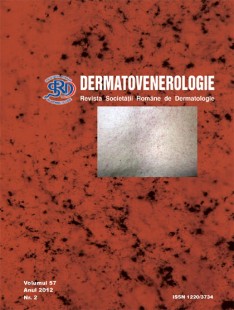Clinical trials and experimental
Subclinical atherosclerosis in psoriasis patients
Background:
Recent studies have shown that severe psoriasis is a systemic disorder associated with accelerated atherosclerosis and an increased risk of cardiovascular disease.
Objective:
To investigate the presence of subclinical atherosclerosis in psoriasis patients without clinically evident atherosclerosis or traditional cardiovascular risk factors.
Material and Method:
A total of 52 participants were enrolled in the current study. None presented clinically overt atherosclerosis or any traditional cardiovascular risk factors. They were divided into 3 groups: 13 patients with mild psoriasis, 13 patients with severe psoriasis and 26 matched healthy controls without psoriasis or any chronic inflammatory disorder. We investigated the presence of subclinical atherosclerosis by determining the cardio-ankle vascular index (CAVI) as an indicator of arterial stiffness and the ankle-brachial index (ABI) as an indicator of vascular occlusion.
Results:
Mean CAVI value was higher in the severe psoriasis group compared with the mild psoriasis group (7 ± 1.3 vs 6.5 ± 1.7), and in both groups compared with controls (6.2 ± 1.6), but the differences did not reach statistical significance. ABI mean values were significantly higher in psoriasis patients compared with controls (0.95 ± 0.10 vs 1.02 ± 0.79, p = 0.01).
Conclusions:
Patients with severe psoriasis have increased prevalence of subclinical atherosclerotic disease compared with the general population. Our results support the importance of screening for cardiovascular diseases and of early intervention in this patient population.
Recent studies have shown that severe psoriasis is a systemic disorder associated with accelerated atherosclerosis and an increased risk of cardiovascular disease.
Objective:
To investigate the presence of subclinical atherosclerosis in psoriasis patients without clinically evident atherosclerosis or traditional cardiovascular risk factors.
Material and Method:
A total of 52 participants were enrolled in the current study. None presented clinically overt atherosclerosis or any traditional cardiovascular risk factors. They were divided into 3 groups: 13 patients with mild psoriasis, 13 patients with severe psoriasis and 26 matched healthy controls without psoriasis or any chronic inflammatory disorder. We investigated the presence of subclinical atherosclerosis by determining the cardio-ankle vascular index (CAVI) as an indicator of arterial stiffness and the ankle-brachial index (ABI) as an indicator of vascular occlusion.
Results:
Mean CAVI value was higher in the severe psoriasis group compared with the mild psoriasis group (7 ± 1.3 vs 6.5 ± 1.7), and in both groups compared with controls (6.2 ± 1.6), but the differences did not reach statistical significance. ABI mean values were significantly higher in psoriasis patients compared with controls (0.95 ± 0.10 vs 1.02 ± 0.79, p = 0.01).
Conclusions:
Patients with severe psoriasis have increased prevalence of subclinical atherosclerotic disease compared with the general population. Our results support the importance of screening for cardiovascular diseases and of early intervention in this patient population.


